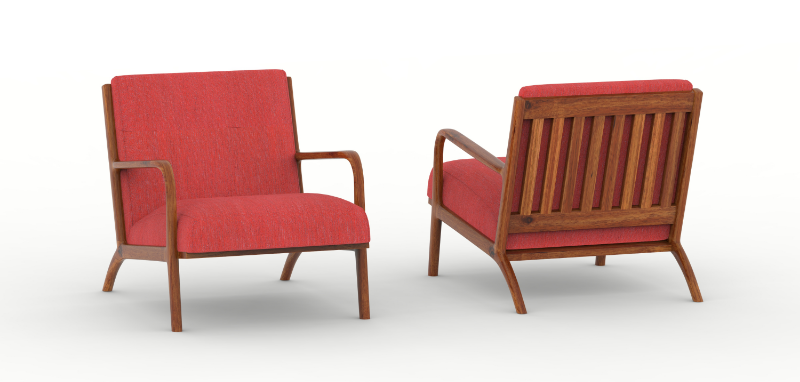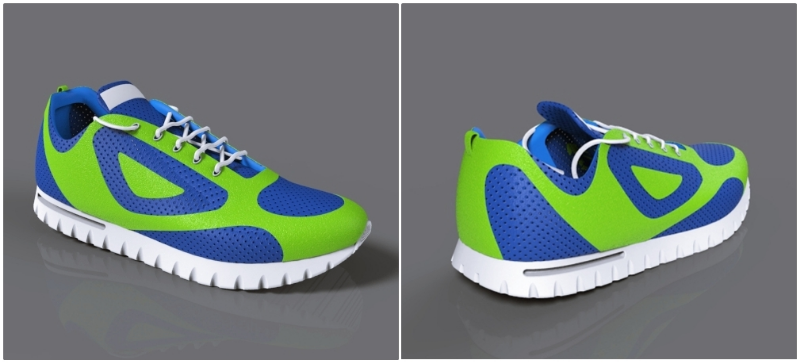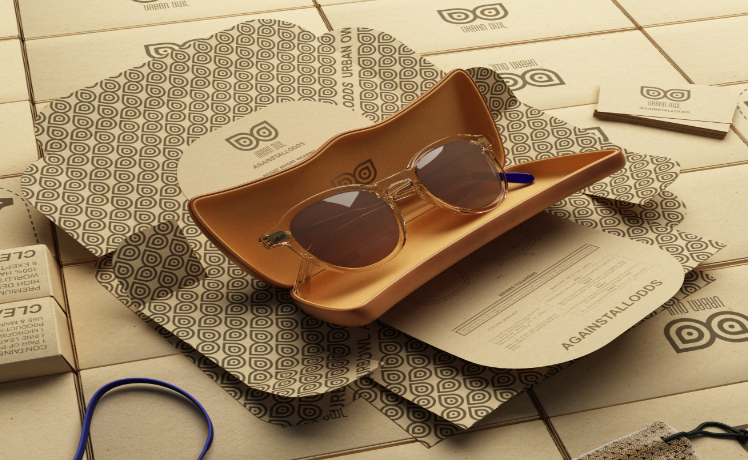Many industries are using 3D models to their advantage. What was once used solely for video games and movies has become a useful tool for various industries. With the right approach, 3D models can help a company save money and turn a profit.
Depending on your field of work, you may have an opportunity to drastically shape your business using 3D models. Some industries, like architecture and product design services, already use 3D models, but there is room for every industry to join in.
With that said, let’s get into some of the best ways you can save money using 3D models.
Create 3D Models of Product Lines, Rather than Relying on Expensive Studio Photography
If your company works with furniture or clothing, you have a huge opportunity to save money. You probably put a lot of effort into marketing your products. That usually involves taking photographs of your designs.
Taking pictures of each and every piece of furniture and clothing can be quite expensive. This is why forward-thinking companies have begun to use 3D renders in their place.
Some companies have already seen the advantages of using 3D models of furniture and clothing to expand their marketing efforts and save money. IKEA is one brand that is pioneering this trend. Their furniture catalogs and other marketing material are chock-full of 3D renders, as opposed to expensive photographs.
RELATED: Why IKEA Uses 3D Renders vs. Photography for Their Furniture Catalog
The worth of a 3D model is higher the more designs you have. For example, if you have one t-shirt in twenty different colors, that’s twenty different photos you’re going to need to take. But with a 3D model, you can simply design the shirt once and change the color with the click of a button.
For furniture, a 3D model can allow you to see how that piece of furniture will look in various settings and lighting that would be expensive to recreate with a real photograph. The cost of building a set, hiring photographers, and transporting heavy furniture is nothing to laugh at.
And again, with a 3D model, furniture material can be changed easily, and you can adapt the set to different environments. The same model could be used for marketing material in North America and Asia, two places where home design is drastically different.
Create a Database of 3D Models, Rather than Expensive Re-Shoots
Let’s use IKEA as an example again, as it’s one of the best. When you take a photograph of a chair you’re going to be marketing, that photograph will be specific for that campaign, as the set and environment are customized.
But if you create a 3D model of that piece of furniture, you’ll have that model in your 3D modeling bank forever. You can use it not just for that specific campaign, but if you ever need to use that chair in another campaign, you’ll have it ready to go with no additional investment.

3D models can be reused over and over again in whatever way you want. If you need that chair to appear in a different room, there’s no need to redo the set, have that piece of furniture shipped to you, and pay another photographer. Simply drop the model into a virtul set and it’s done.
This principle applies to other fields, as well. Other industries that use a lot of 3D assets are entertainment and gaming. It goes to follow that the more assets you create, the larger you asset bank will be. This means you have more material to draw from for your games or video projects.
Assuming you’re making a video game, you can easily use a previously made asset and customize it for that specific game. This saves you a lot of time, as you don’t have to worry about recreating the entire model from scratch. No, you already have models of humans you can base your new human’s design off of.
Explaining New Products and Prototypes Using 2D Design is Difficult
Many industries use 2D drafts to communicate plans, layouts, furniture designs, and specifications of products. While 2D vs 3D CAD is still a relevant debate, most businesses have already made the leap to 3D CAD design.
If you’re one of the few left behind, you’d be doing yourself a favor if you caught up. There are many advantages to 3D CAD that 2D simply can’t provide. For architects, a 2D draft can only provide so much: measurements, the structure of the building, and possibly the materials.
However, a 3D model will be able to communicate so much more. A finished 3D model of a floor layout, a room, or even an entire building can tell you exactly how it’ll look and perform in the real world, allow you to visualize the rooms and structure that much better. You can even manipulate materials and test the model against real-world conditions.
You’re more likely to convince investors and buyers using a 3D model than a 2D draft. And that doesn’t just apply to architecture. The fashion industry is quickly adopting the use of CAD for fashion design. 3D visualizations of articles of clothing can be used to test an outfit on a sample model to ensure measurements are accurate and even test different fabrics.
For product design, a 2D draft can suffice for simple products. With that said, every single product would benefit from a 3D model. In fact, you won’t find a product design CAD service that strictly works in 2D. The advantages 3D provides are too great.
You can visualize the product, change the components and materials much easier, ensure the aesthetics are where you want them to be, and ultimately ensure it’s functional. A 3D model can be tested and configured to work even before the prototype is made. With a 2D draft, numerous prototypes will have to be made until the right one can be done.
Not Have to Pay for Work You Don’t Want
With a 2D draft, your understanding of a project is limited to what you see on the paper. When you’re communicating your design with a 2D draft, details and nuances that you picture in your head aren’t accurately communicated.
If you were looking to get a pair of shoes designed based off of your 2D draft, you might end up with something you didn’t want. You could be able to get down the measurements, the shape, and the materials, but a 2D draft doesn’t convey the colors, patterns, or all of the angles of the shoe. This can lead the designer to misunderstand your vision and create a shoe that wasn’t actually what you were looking for. This will cost you money in the long run.

With a 3D model, you won’t have any of these problems. A 3D design of the shoe can communicate literally everything you need to convey. That is, the shape, the material, the colors and patterns, as well as every single angle can be communicated. This ensures that the design you end up with is accurate the first time, reducing the number of prototypes and reworks required.
This goes for other industries too, where a potential mistake could be even more costly. A CAD design architectural company can’t afford to work off of 2D drafts alone, as they can’t understand the intricacies of the building plans. This could lead to buildings designed all wrong, including room layouts and floor plans.
Reducing Lead Times
By using a 3D model, you can drastically reduce your lead times for all engineering and architectural products. Freelance mechanical engineers, thanks to 3D models, can spend more time actually creating and producing the product as opposed to designing it.
A 3D model allows engineers to identify problems beforehand, minimizing the risk of accidents and the need to recreate and redesign models. Your budget will be planned and easier to follow, as there will be less unforeseen changes. And you won’t have to worry about reworking your schedules. A 3D model lets you plan ahead and is much cheaper to rework.
Modern CAD systems are built to reduce lead time and help companies get their products on shelves quicker. Many manufacturing problems can be solved using 3D models and CAD services. There’s a reason these updated programs focus on using 3D models, 3D modeling design, and virtual simulation. They are proven to be the most efficient tools for product design.
Can Build Full Sized Models & Visualize Product Dimensions
When designing a product, maybe something large like a couch, it’s tough to understand proportion and size using just a paper and pencil. You can draw the model and write down the measurements, but it’s hard to visualize how a couch will look in an actual room, full-sized.
With a 3D model, you can design the couch to be full-sized. You can accurately test how the couch will look in a life-sized room, seeing how it will affect the function of a room and other pieces within it.
Or, you can design the couch to scale, which can accurately convey the same information with less effort. So, a to-scale model is sometimes better than a full-sized model. But the real upside is that you have the choice to either make a scale or full-sized model depending on your needs.
Help You along with Marketing
A well-designed 3D model can help align your marketing efforts and keep your team on the same page. An important part of marketing is knowing what you’re actually selling. If everyone is working toward a common goal with the same vision in mind, it’ll go more smoothly.

A 3D model can help your entire team, even those who aren’t trained to understand the nuances of product design and architecture, understand the model and its function. A 2D drawing can be hard to decipher for those not trained to do so.
Aside from that, a high-quality 3D model can be used in marketing efforts including advertisements, pitching to investors, and even selling a product.
3D Models Are Cost-Effective and Good for Business
As you can see, there are many convincing reasons to use 3D models. They can help your company save a lot of money, regardless of your industry. A good 3D model can convey a lot of information about a potential design and even help sell the design itself.
If your business is still using 2D drawings, or if you just didn’t know the benefits of a 3D model, it’s time to start. You’ll save a lot of money and time with their use.
If you don’t want to hire 3D modelers on-staff, you can hire freelance 3D modelers to help. At Cad Crowd, we have a network of pre-vetted, qualified CAD services and 3D modeling experts who are eager to help with your project.

